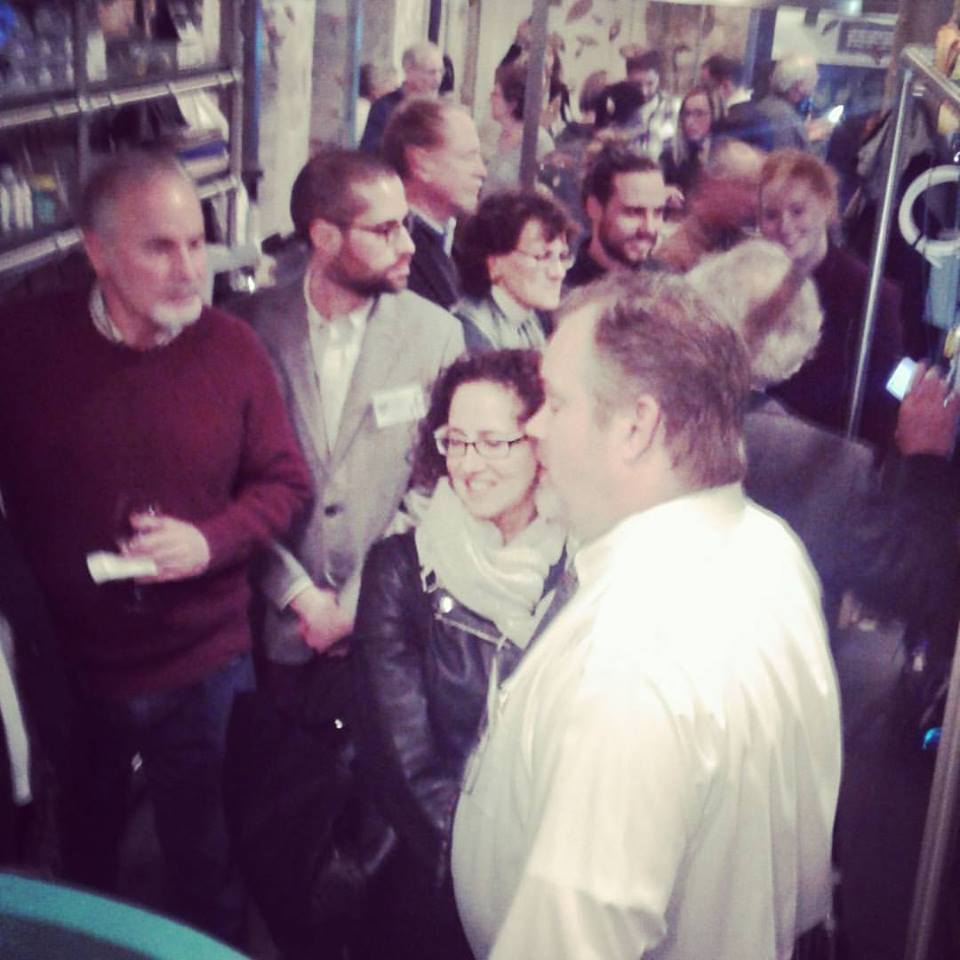Blog Post: Mussel Hatchery Update

Lance Butler talks with guests about the host fish that will be placed in the hatchery.
A Scientist’s Perspective On The Mussel and Host-Fish Experience In the Laboratory
By Lance Butler (Aquatic Scientist, Philadelphia Water Department)
Most larval species of freshwater mussels (glochidia) rely on host fish to transform into juveniles and to disperse into new habitats. In many cases, this relationship is unique, because a certain species of mussel may only rely on one or two types of fish to successfully complete this stage of their life cycle. The goal of FWW’s Freshwater Mussel Hatchery is to successfully mimic the natural life cycles of certain native mussels, to ultimately produce viable offspring that will eventually be released into our surrounding waterways.
After fertilization, developing embryos attach onto the gills of female mussels until environmental conditions, such as water temperature, and biological factors, such as the presence of a host fish, become favorable. Once the glochidia have fully matured, the female mussel releases her offspring in attempt to successfully attach to the gills of its host fish. If successful, the glochidia will go through a process of change (known as metamorphosis), disperse – upstream or downstream depending on the host – and eventually release from the gills and relocate into the bottom of the riverbed.

In the mussel laboratory, scientists will collect brood stock of a freshwater mussel species from the Delaware River and place them in a temperature-controlled environment, known as an animal housing unit (AHAB) to prolong the brooding period until its specific host is collected. Scientists will transport the host fish to a large 6-foot diameter holding tank, acclimate the chosen species for a period of 3-4 days and observe for any signs of stress or disease. During this period, scientists will slowly raise the temperature of the water in the freshwater mussels’ habitat units to mimic environmental temperatures that will induce the female mussel to display its glochidia (mussel babies) on her mantle (“mouth”). Both the female mussel and host fish are placed in a confined space, such as a 5-gallon bucket, to stimulate the release of glochidia, in the hopes of the mussel babies attaching to the fish gills. After about 30-60 minutes, scientists will remove the fish and check the gills for signs of infestation. If successful, the fish host is placed in a separate AHAB unit and monitored for another 5-10 days.
The glochidia mature and physically change into a juvenile freshwater mussel and ultimately release from the gills. During this period, scientists can collect as many as 1,000 juvenile mussels, and place them in a food-enriched environment, such as a Barnhart Bucket system, where juvenile mussels begin to actively filter the water and intake necessary food sources (e.g., algae) for growth. Immediately following the release of the glochidia from the gills, the host fish is observed for a brief period and then released back into its native environment.
